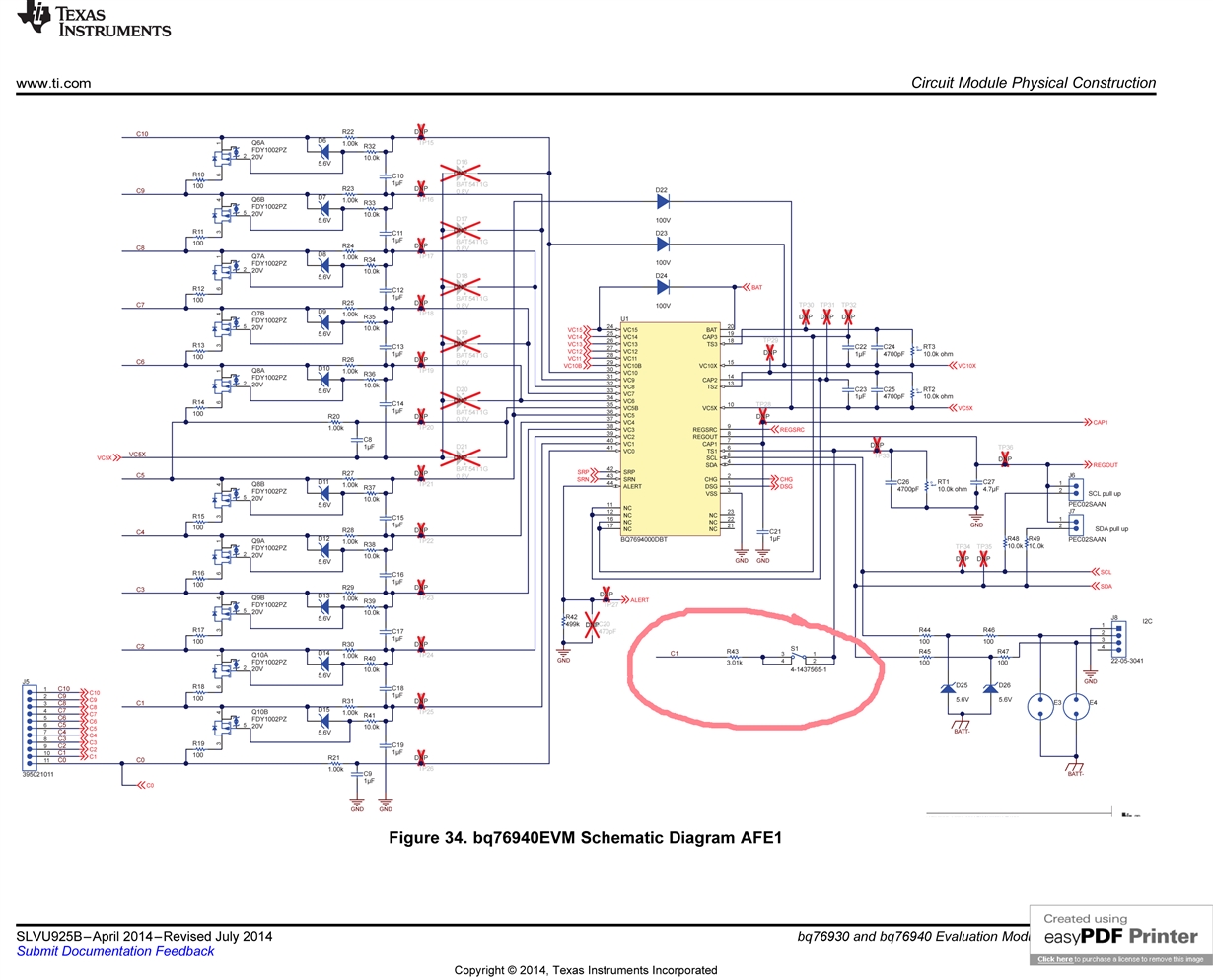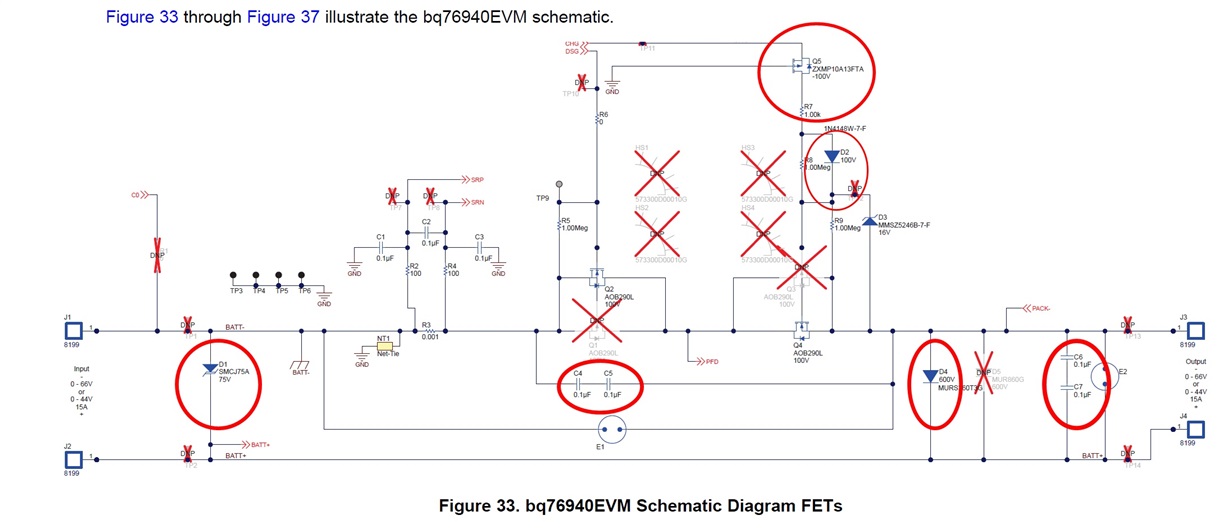Other Parts Discussed in Thread: TIDA-00792, BQ76200, TIDA-00449, BQ76920, BQ78350, , BQ78350-R1
Hi,
In BQ76940 evl board reference schematic, battery each cell is connected to BQ76940 IC though resistor,capacitor & mosfet has a switch.
1) what is the use of connecting the battery each cell to BQ76940 IC though resistor,capacitor ? resistor and capacitor used for filtering?
2) P mosfet work has a switch for External passive cell balancing through 100 ohm resistor ? and 100 ohm resistor load?
3)can we use P mosfet instead of P mosfet?
Rajaneesh




